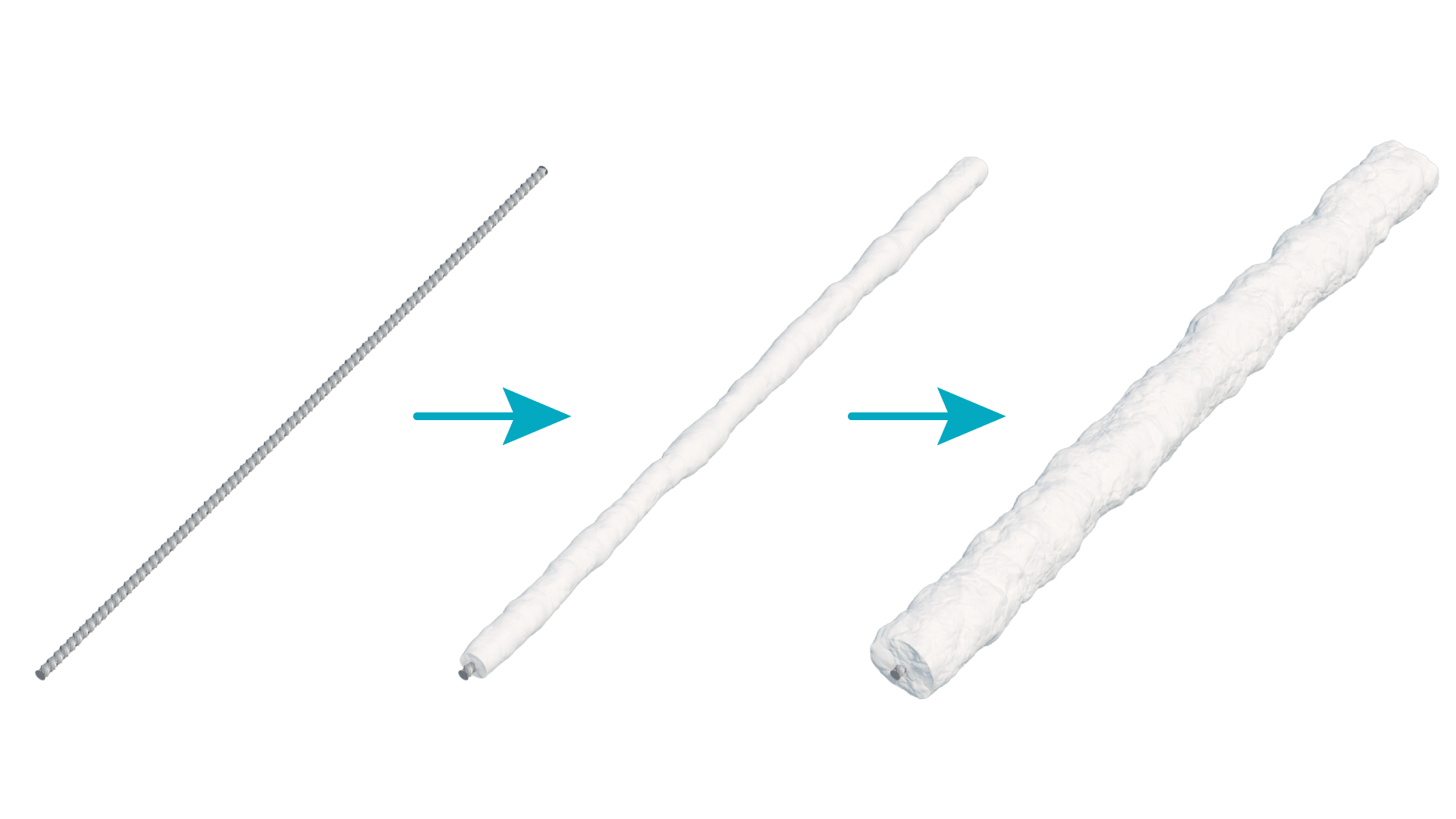BIOROCK TECHNOLOGY
WHAT IS BIOROCK TECHNOLOGY ¹
Biorock technology is used to protect coral reefs by building rock-like materials beneath the ocean.
It is a process in which a very low voltage electric current is applied through the seawater. This causes the deposition of crystalline salts of minerals dissolved in water.
These deposited crystals are present mostly in the form of calcium carbonate, that builds a certain structure & these formed structures are called as “biorock”.
HOW DOES IT WORK? ²
Similar to electrolysis, mineral accreation devices (Biorock Technology) uses low voltage, where direct current is applied to 2 pieces of metal that are submerged in water.
Anodes: Negative electrodes which liberate electrons from the wire into the water, causing oxidation.
Cathode: Positive electrode that acquires electrons from water into the metal structure, causing H2O to break up and release hydrogen bubbles. As the surrounding water becomes alkaline, calcium and other minerals precipitate out and accumulate on the metal.
For coral restoration to take place, coral fragments and other organisms are planted on the cathode, which are usually made out of steel rebar, forming Biorock.
ACTION PLAN ³
BIOROCK TECHNOLOGY APPLICATIONS ⁴
Coral Reef Preservation
It facilitates the survival & growth of coral reefs by providing suitable habitats & improvising resistance to environmental pollution.
Prevents Shore Erosion:
Used as breakwaters that slow down heavy water waves using the force of friction. Ensures shore protection through less forceful wave passage and prevents shore erosion.
Protecting the Marine Construction- Regeneration
The advantage of biorock is in repairing cracks & damages by filling with cement - like hard limestone or calcium carbonate.
Sustaining Marine Lives:
Design structures that support marine species' survival, growth, and healthy living conditions.
Establish new ways of sustaining aquaculture by providing fishes, lobsters, and other marine creatures with suitable habitats & food.
HOW TO BUILD AN ELECTRIC REEF ⁵
Design the structure
Assemble the structure using conductive materials
Submerge the structure underwater and attach the annode material.
Attach wires from solar panel or voltage generator
Turn on current
Watch for bubbles- Signifies limestone forming.
Attach coral fragments, monitor coral growth.
BIOROCK/ DESIGNING A STRUCTURE ⁶
Designs take into account depth, wave action, ocean bottom characterstics and aesthetics.
Structures are easily built with locally conductive material, usually rebar.
*Rebar can be welded in any shape.
CONSIDERATIONS FOR BUILDING A BIROCK REEF ⁷
Depth of water*
Type of ocean bottom
Continental Shelf; shallow waters of the ocean.
Distance from shore*
Availability of electric power
This electricity interacts with the minerals in the seawater and causes solid limestone to grow on the structure. It draws on the principles of electrolysis, where the electric current causes a chemical reaction to occur which would not have otherwise.
Availability of broken coral fragments.
To aid in stimulation of the coral tissue for growth, allowing them to grow into clones at 25 to 50 times the normal growth rate.
Dedication to maintaining reef operation.
Funding.
-
Mineral accretion growth rates are typically from one to several centimeters of new rock per year, depending on the surface area of the structure.
The rate at which the coral grows depends on the amount of current, the size of the structure and the species of coral.
Typically, growth rates are about 3 to 5 times faster than normal.
-
The structure is constructed of ordinary construction materials that are typically available almost everywhere. This can include steel rods, pipe, or rebar. Other materials for the project include electrical cables and epoxy or silicone sealants to protect electrical connections. Where the main structure serves as the cathode, another electrode, the anode, is made of a special titanium mesh that does not corrode.
-
Biorock Technology makes use of shore based DC power sources (chargers, solar panels, windmills etc.)
Because of voltage drops in the cable to the structure it is better to work within 100 yards (91.44 m) of the power source. However, there is no problem with going further if one is willing to boost the voltage at the source to compensate for voltage drops.
Longest coral reef structure: Maldives; more than 400 m from shore.
-
There is no limit to the depth.
Typically, coral structures are built in shallow water (5 to 25 feet bottom depth) because corals grow best in brightly lit shallow water.
-
The electricity drives the electrolysis of water that caused the chemical reactions growing dissolved minerals out of sea water.
It also prevents all rusting of the metal.
And it provides energy for the organisms exposed to the electrical field, causing faster growth and greater resistance to environmental stress.
Without the electrical current these advantages are no longer present.
DID YOU KNOW? ⁸




